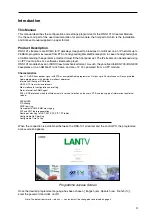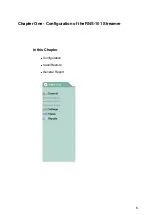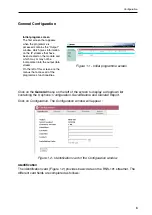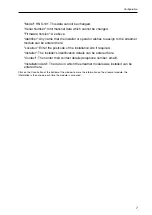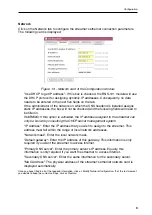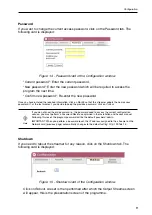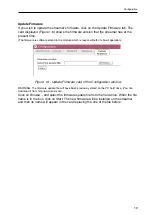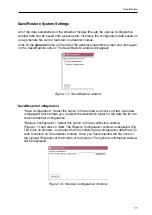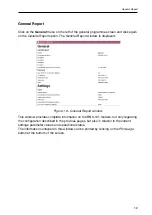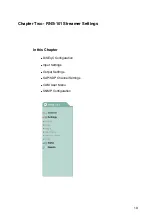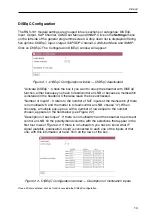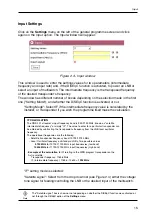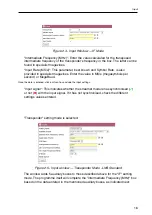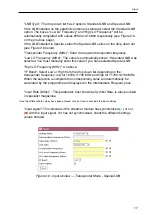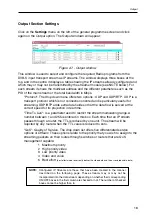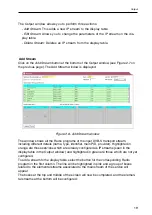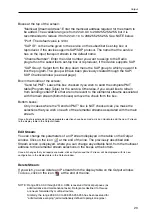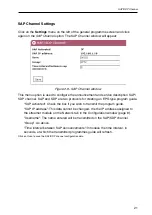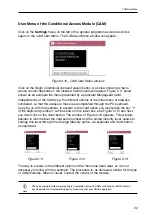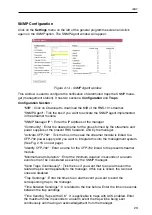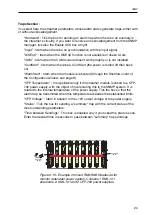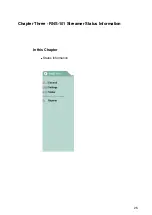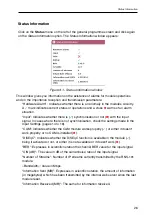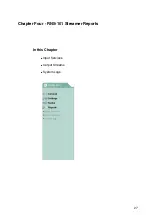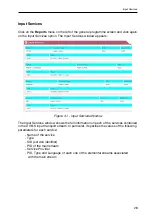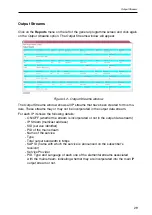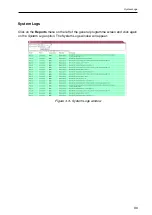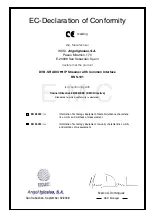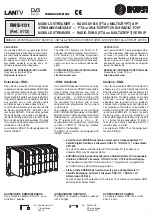
18
Output Section Settings
Click on the
Settings
menu on the left of the general programme screen and click
again on the
Output
option
.
The Output windown will appear:
Figure 2.7 - Output window
This window is used to select and configure the required Radio programs from the
DVB-S input transport stream as IP streams. The window displays three boxes at the
top, and in the centre it displays a table showing the IP streams already configured and
which may or may not be transmitted by the streamer module (see NOTE below). For
each stream it shows the multicast address and the different parameters such as the
PID of the main stream or the total bandwidth in Mbps.
"Protocol": The drop down menu offers two options : UDP and UDP/RTP. UDP is a
transport protocol which is not connection oriented and is particularly useful for
streaming. UDP/RTP adds extra data fields so that the data flow is served at the
correct speed for its projection in real time.
"Time To Live": Is a parameter used to restrict the stream multicasting range. A
number between 1 and 255 is entered in this box. Each time that an IP stream
passes through a router, the TTL is reduced by one unit. The stream will be
rejected by any router when the TTL value is reduced to zero.
"QoS": Quality of Service. The drop down list offers five differentiated service
options or
Diffserv.
These options relate to the priority that you wish to assign to the
streaming packets on their routes through switches or routers that are QoS
management capable:
1 Maximum priority
2 High priority video
3 Low priority video
4 Video and voice
5 Best effort
(best effort made to correctly deliver the video data and the associated audio data)
Output
NOTE:
Configured IP Streams are those that have been created in the manner
described on the following page. These streams may or may not be
incorporated into the data stream depending on whether their corresponding
ON/OFF boxes in the first column are checked or not. The number of checked
boxes cannot be higher than 8.

